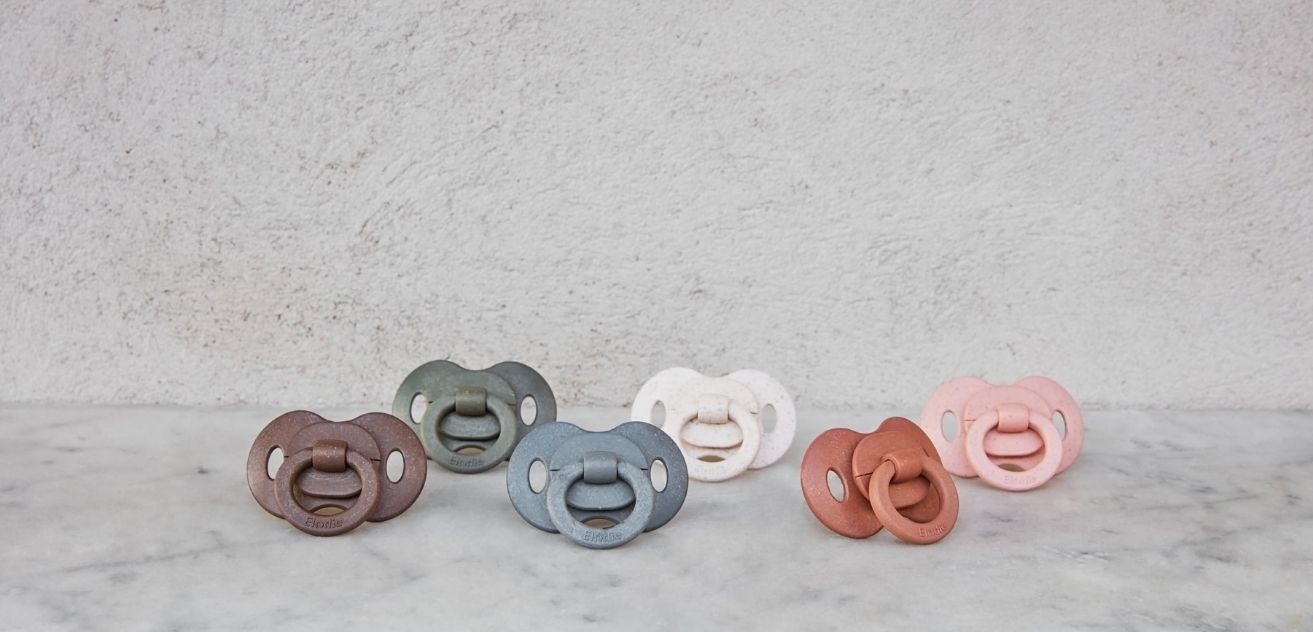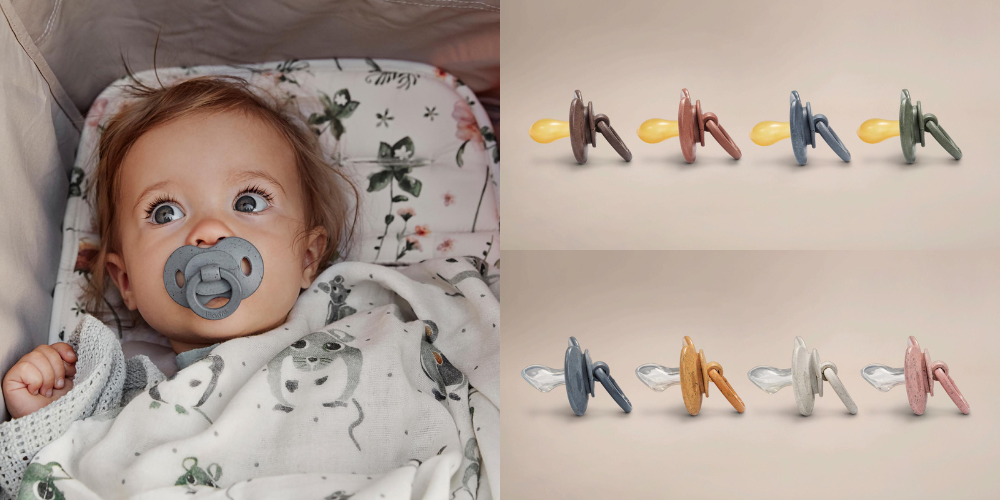
Which pacifier do I choose for my baby?
From birth, your baby has a natural sucking reflex. This can make some children have the urge to want to suckle in between feeds. A pacifier not only provides comfort, but also gives mom and dad a bit of rest. The large range of pacifiers available doesn’t make the choice for the perfect dummy for your baby any easier. We want to give you a hand by explaining a bit more about the different types and materials on the market!
Your baby decides
If you are looking into buying a pacifier for your baby, don’t rush out and get 10 of the same dummies at once. The difference between bottle teats, a real nipple and a pacifier is huge. Your baby will always have to get used to a pacifier, and you will soon find out which shape or material is his favourite.
Which material is best?
- Silicone teats
At BABYmatters, we have been a fan of silicone for a while. The material is sturdy, safe and hardly ever causes allergic reactions. Silicone can feel a bit stiff to begin with, but this also ensures that the pacifier lasts longer and doesn’t tear as easily.
- Rubber (latex) teats
Natural rubber often gives a softer and more natural mouth feel. This makes rubber pacifiers suppler, but less colourfast and wear resistant. It is a good idea to replace latex pacifiers every month. Natural rubber is often biodegradable, however.
Attention: Does your baby get skin irritation after using a latex pacifier? He might have a latex allergy. In that case, it is best to switch to a silicone pacifier.

Which shape is best?
- Round teats
A round teat is more easily accepted by babies that are still being breastfed. The shape most resembles the nipple, which also reduces the risk of the so-called nipple-dummy confusion.
- Orthodontic teats
Some dentists and doctors swear by orthodontic teats, but according to the Dutch Child & Family Agency, it is not the teat that causes dental deformations, but the sucking motion itself. The shape of the teat has nothing to do with it. This means that giving your child an orthodontic teat has no effect on reducing the risk of having to wear braces later.
The shape of the pacifier does not affect speech and language development, but the duration of use does. If your child uses a pacifier for too long, it has negative effects on the development of tongue, lip and chewing muscles, which in turn has a negative impact on teeth, speech and language. So make sure to give the pacifier only during the first few months and during naps. Do not use it too often to soothe your baby.
Elodie has pacifiers with an orthodontic silicone teat as well as a latex teat with models for newborn babies and babies of 3+ months. Discover the entire range here!
The matching pacifier clips are not only beautiful, they are also super handy! Your child's pacifier will not fall on the floor. Find your matching pacifier set here.
> Pacifier clips
> 8 frequently asked questions about pacifiers
> Elodie presents: the very first bamboo pacifier in the world
Related posts
In the picture: BeSafe Pregnant
in 'Blogpost'
The benefits of a swaddling bag
in 'Blogpost'
How do I choose the right sleeping bag?
in 'Blogpost'
